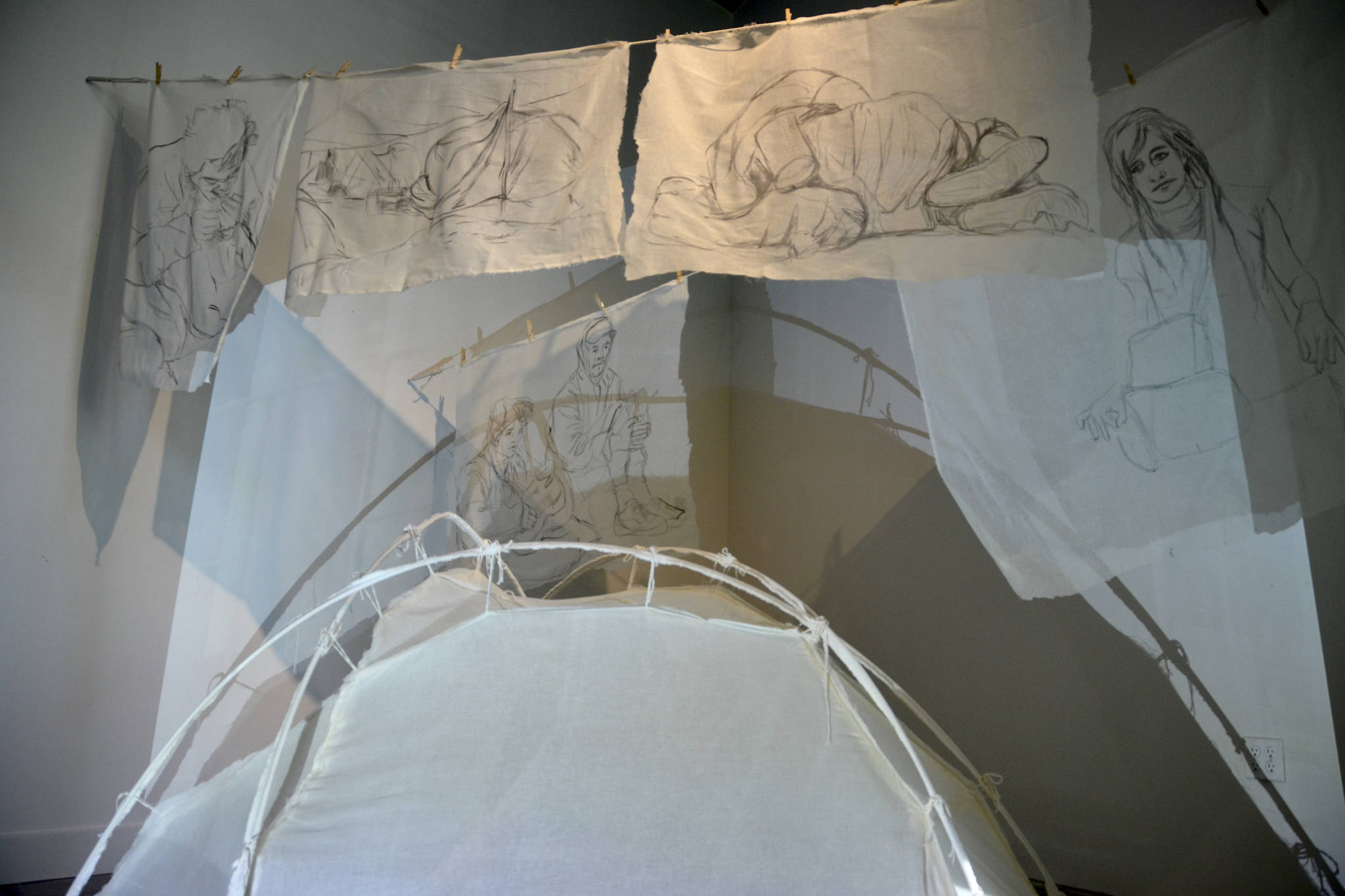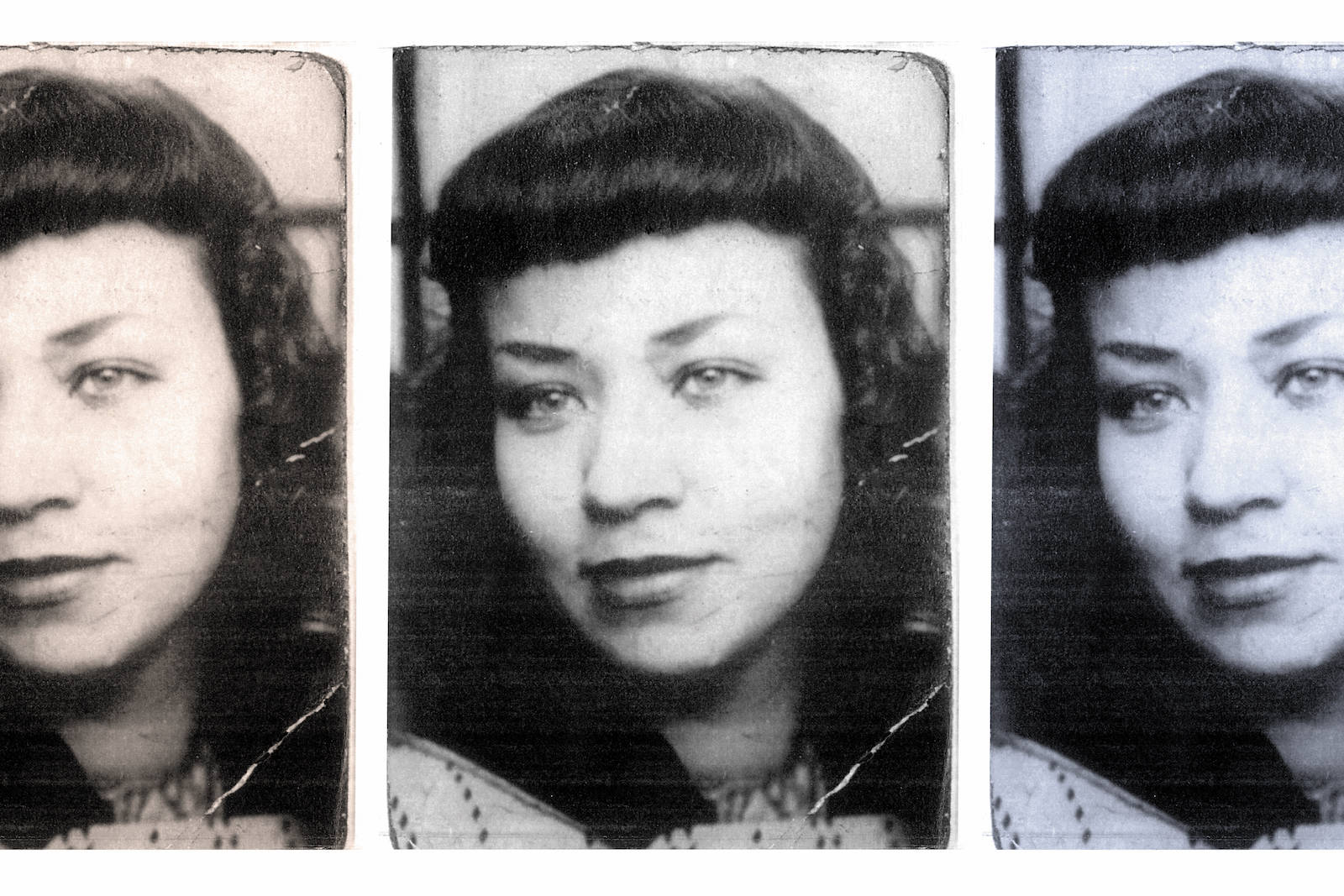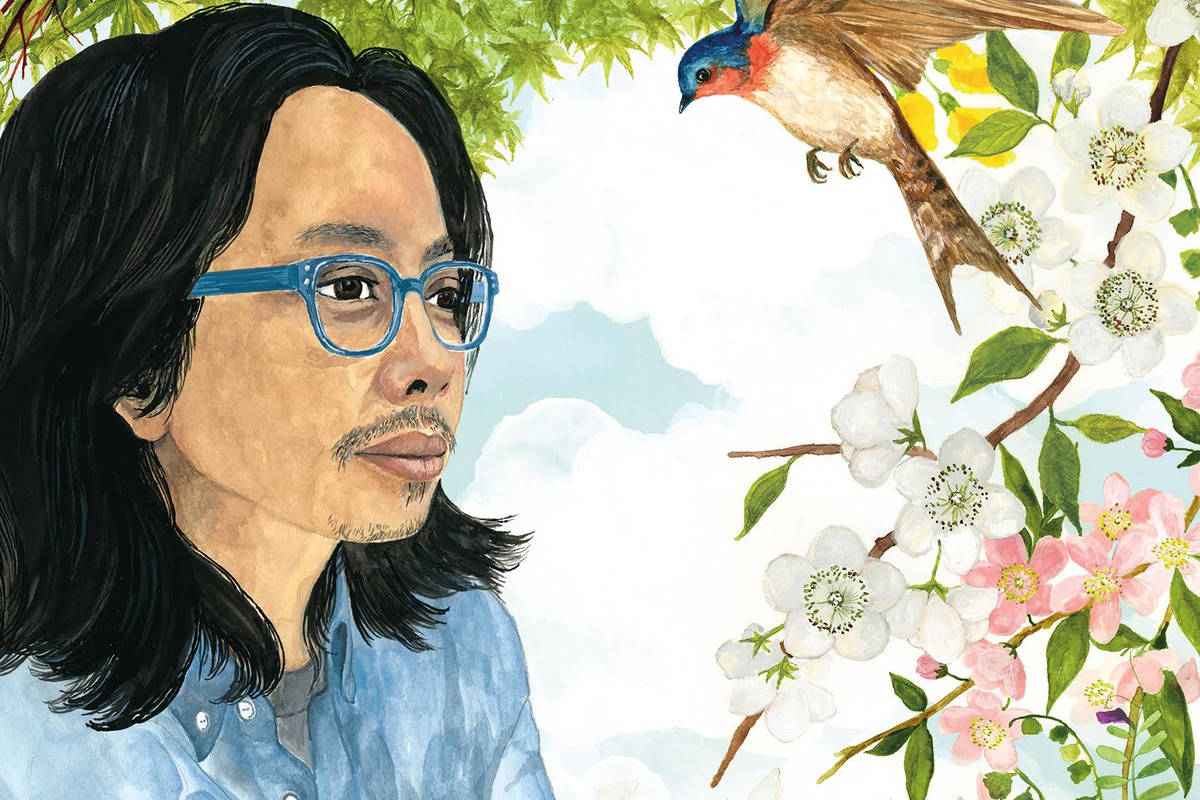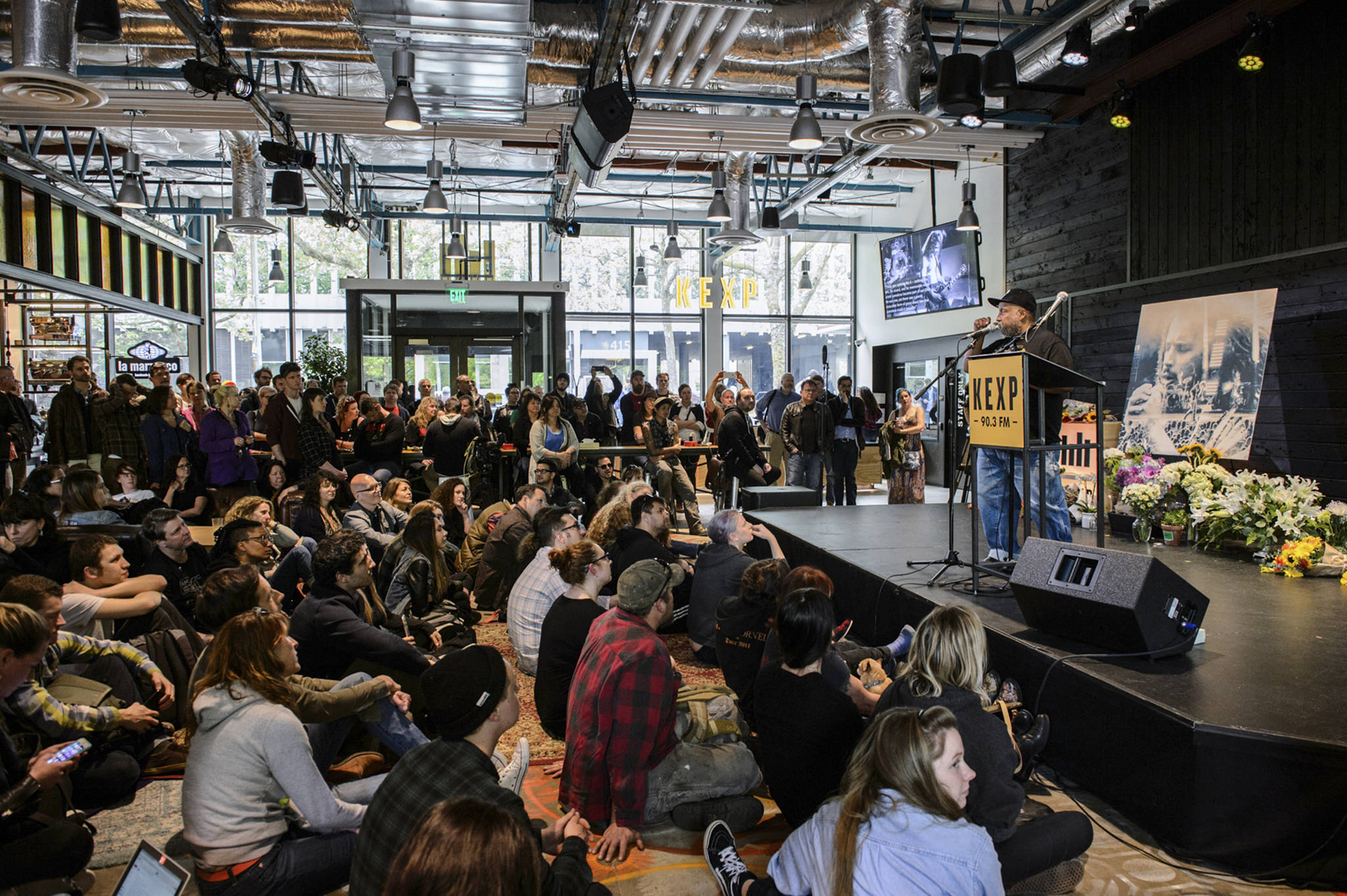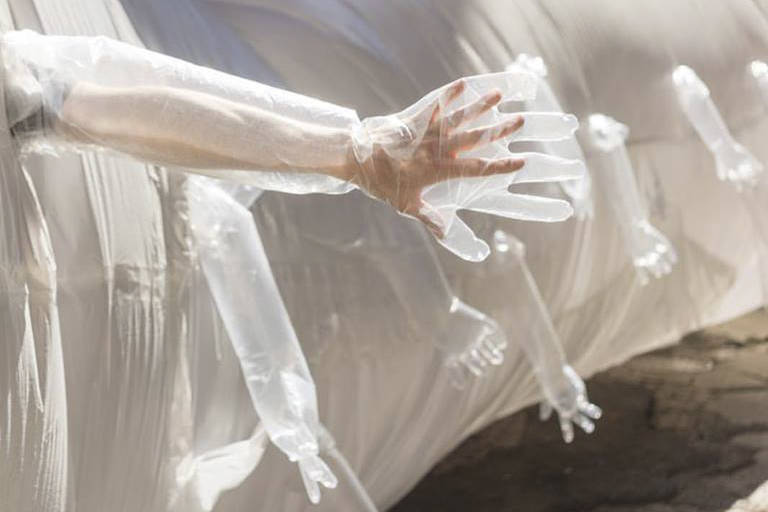Makeshift shelters are a common sight on Seattle’s streets: cardboard and weathered tarp pieced together to create private refuge in public spaces. This week, a new shelter made of scrim is joining their ranks, visible through a window at 700 Fifth Avenue.
The scrim tent is featured in Tatiana Garmendia’s new exhibit, No Hiding Place Down Here, at the Seattle Presents Gallery. Guests can enter the small Office of Arts and Culture gallery during the limited hours when a curator is present, but the exhibit can also be viewed from the street.
Garmendia’s tent is beautiful: an off-white color held to its poles by coarse string that dangles and frays gracefully. She hopes its aesthetics will cause people to linger at the exhibit—longer, at least, than one might while passing tents in the streets. The tent, Garmendia says in a recording played throughout the exhibit, is an ode to her childhood. She also dedicates the structure to others who have experienced homelessness—anyone lacking a safe and welcoming space.
Garmendia experienced homelessness as a child in the 1960s when her father fell out of favor with the Castro government in Cuba. The artist left Cuba, the country of her birth, seeking refuge through her mother’s Spanish passport. In Spain, Garmendia and her family were housed by a charitable institution until they eventually joined relatives in the United States.
For 24 years, Garmendia has taught art at Seattle Central Community College, where a number of her students have been homeless. For a long time she lived on Capitol Hill, but about five years ago moved out of the city due to rising rent. Unlike many of Seattle’s homeless, however, Garmendia has always had a place to go. “I’ve been homeless, but I’ve never been unsheltered,” she says. “I took an interest in the homeless issue because I’ve known the anxiety of having no home, I’ve known the anxiety of not being wanted.”
But being unsheltered presents other difficulties, which Garmendia is less acquainted with: a lack of privacy, exposure to violence and sickness. The exhibit’s title is a quote from Maya Angelou’s “On the Pulse of Morning.” It’s a poem about fresh beginnings—about taking action rather than hiding in shame. “Your passages have been paid,” it reads. “Lift up your faces, you have a piercing need.” The title touches on the lack of privacy experienced by the homeless, but Garmendia says it has another meaning: “There’s no hiding place for our lack of empathy.”
The scrim the tent was constructed with is a thick, coarse material often used in theater that has an opaque quality until light is shone behind it. “Working with [scrim] … really parallels the complex relationship that we have with the homeless,” Garmendia says. “We see them, we don’t see them. They have privacy, they don’t have privacy. There’s this permeable boundary between the private and the public, which is a liminal space.”
The exhibit is meant to represent the liminal space of a homeless encampment. Portraits of the homeless hang from the ceiling around the tent, painted in contoured lines with dirt swept from the street mixed with acrylic. Projected on the tent are photos of unsanctioned structures in Seattle. Any images of the homeless themselves are unidentifiable.
In creating the installation, Garmendia and her partner Scott Story, who shot the exhibit’s photos, were challenged with the task of exposing Seattle’s homelessness problem while preserving the privacy and dignity of their subjects. “As an artist, that position of gazing is a powerful one. If I gaze and I show something, then there is the possibility of revelation, and that’s what the city is paying me to do—to reveal what I find. And some of what I reveal may be problematic.”
There’s a contradiction here: How does one simultaneously provide shelter and exposure? How can we honor the right of privacy while also insisting “It’s OK, there’s nothing to be ashamed of”?
Garmendia doesn’t have answers or solutions. The exhibit, like the poem, isn’t about making people feel guilty. It’s about honoring those who struggle, and waking people up.
“There’s plenty of blame for all of us,” she says. “And there’s plenty of grace for all of us as well.”
Seattle Presents Gallery, 700 Fifth Ave., seattle.gov. Noon–2 p.m. Thurs. Ends Oct. 14.
